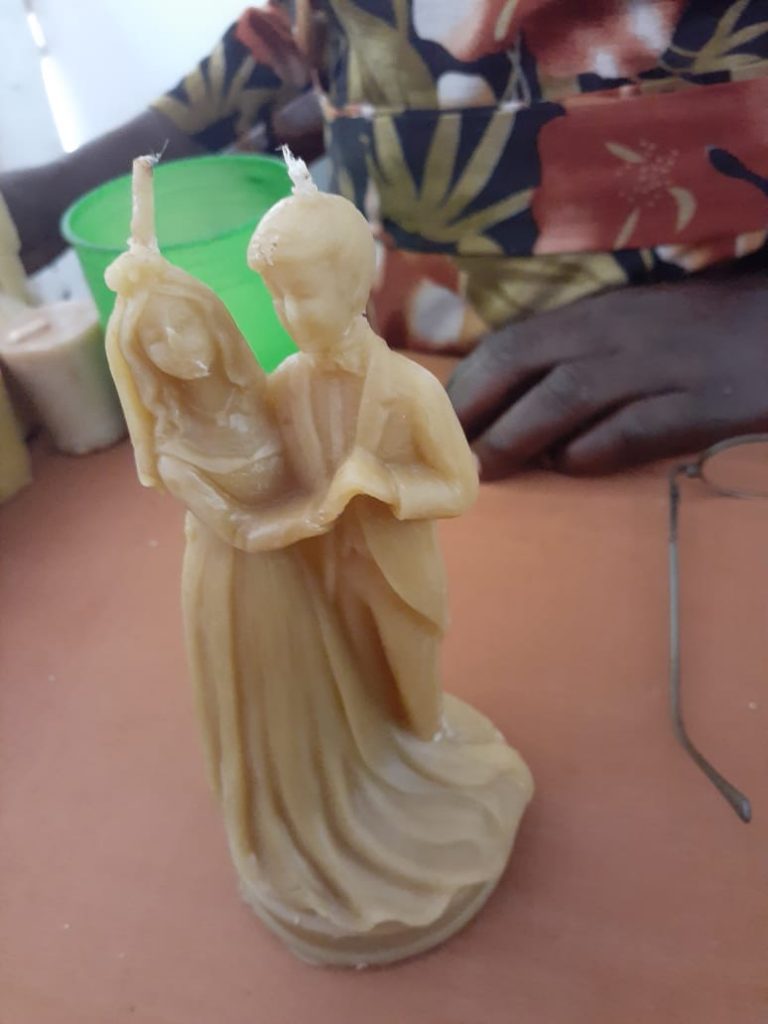What we learnt from the Mombasa Agricultural Show
Field Report by Community, Livelihoods and Education Officer, Victor Ndombi

Our beehive fence farmers and Kileva primary farm club students visited the Mombasa Agricultural Show, from the 4th-8thSeptember. The purpose of the trip was to equip farmers and students with different agricultural techniques that could boost food security which is in line with government’s Big Four agenda and second SDG ‘No hunger’. Farming in Sagalla has been a mountain to climb due to soil degradation and frequent droughts caused by unreliable rainfall. Farming is possible in dry areas as it is in any other areas that receive high rainfall. The first section we visited was the Agriculture section, displaying different farming techniques and high yield products. Having a selection of high quality seeds that are drought tolerant is very critical and farmers were advised on different types of crops that are drought tolerant and various farming techniques to be adopted.


The next stop over was the Forestry section. Trees provides unquantifiable benefits both to humans and environment such as medicinal value and carbon sequestration respectively, and the UN recommends 10% forest cover by vision 2030. This can be achieved through the restoration of degraded landscape and avoiding illegal logging of forests. Our farmers were trained by experts from both government and private sectors how to establish tree nurseries, the best agroforestry techniques and drought tolerant trees.

Bee keeping was our major area of interest as our farmers are fascinated by the activity as a way to minimize HEC and source of income. Trees’ flowers are critical source of forage for the bees, consequently leading to production of honey. Farmers were taught how regular maintenance of hives and provision of attractants provides a better home for bees. Bee products include more than just honey, they also include candle wax and wax sculpture.


Wildlife in Kenya contributes to nearly 14% Kenya’s Gross Domestic Product, and Sagalla area is home to the some of the largest mammals on land ‘Elephants’. Farmers here have had difficulties with managing human elephant conflict due to frequent crop raids during rainy seasons. By visiting the wildlife section during the show, they learnt how to live harmoniously with these massive creatures since ‘they belong to us and not KWS’. Students were able to see different types of reptilia especially the snakes.


The last section we visited was the Parliament. The students were taught about the history of Kenya since independence, which is being taught in their school curriculum. They were also taught how the policies and laws are made in the parliament.
The farmers learnt new skills in farming and forestry which they tend to practice thereby increasing food security and building community resilience. Planting of the agroforestry and drought tolerant trees could save our country from unprecedented effects of climate change. The future of conservation lies in the hands of the students. By replicating what they learnt during the trip, threatened African honey bees will be protected and the number of elephants will increase through human elephant co-existence.
Photo credits: Victor Ndombi

Leave a Reply
You must be logged in to post a comment.